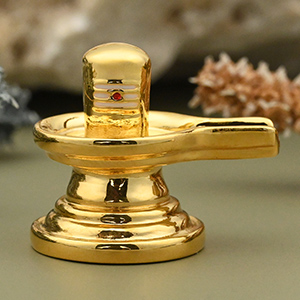The Shivalinga, a powerful symbol of Lord Shiva, is not just an object of devotion but a representation of cosmic energy—the union of Shiva (pure consciousness) and Shakti (divine energy). Many devotees bring a Shivlinga home to worship and seek blessings of peace, protection, and spiritual growth. But there are a few sacred rules one must follow to properly honor this divine form.
If you’re planning to keep a Shivlinga at home, here are the key guidelines to follow for respectful and spiritually aligned worship.
1. Choose the Right Shivlinga Size

- As per traditional texts, small Shivlingas (up to the size of your thumb or fist) are best suited for home worship.
- Larger Shivlingas are recommended for temples or public shrines.
- Keeping a huge Shivlinga at home is generally discouraged unless you can follow temple-style rituals.
2. Placement Matters: Direction and Position
- North or Northeast (Ishan Kona) is the ideal direction to place the Shivlinga. It is believed to be spiritually uplifting.
- Make sure the Yoni base (disc under the Lingam) faces North, and the devotee should face East while worshipping.
- The water should flow out towards the North if you’re performing abhishekam.
3. Daily Abhishekam (Ritual Bathing)

- Offerings during Abhishekam: Water, raw milk, honey, ghee, curd, sugar, and holy ash (vibhuti).
- Chant “Om Namah Shivaya” or other Shiva mantras while performing it.
- Avoid touching the Shivlinga during menstruation or with unclean hands.
- Wipe it gently after the Abhishekam and offer bilva (bael) leaves, white flowers, sandal paste, and fruits.
4. Never Use These Items on Shivlinga
- Tulsi (holy basil) leaves – sacred to Vishnu, not to be offered to Shiva.
- Ketaki (screw pine) flowers – as per legends, Lord Shiva rejected them.
- Avoid items like red flowers, turmeric, or anything forbidden in Shaiva traditions.
5. Keep the Area Pure and Peaceful

- Maintain cleanliness in the prayer space at all times.
- Light a diya (lamp) with pure ghee or sesame oil daily.
- Avoid placing the Shivlinga in bedrooms or near bathrooms.
- Regular chanting of Shiva mantras or Rudram Chamakam enhances the energy.
📿 6. Worship With Devotion, Not Out of Fear
- Shiva is known as Bholenath – the easily pleased one. Worship Him with love, surrender, and truthfulness.
- It’s not just rituals, but your intention and purity that matter the most.
Bonus Belief:
Many believe worshipping the Shivlinga at home brings peace of mind, family harmony, and spiritual upliftment — especially during Sawan (Shravan) month, Mondays, and Mahashivratri.













